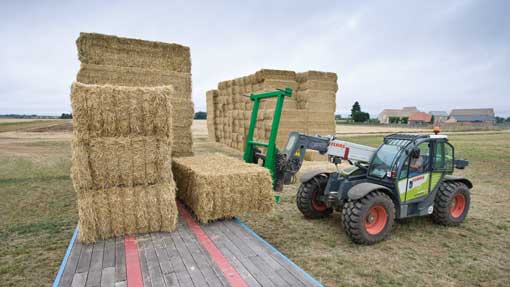Telehandlers are used extensively across a variety of industries, from construction to manufacturing and agriculture. Used safely, they are incredibly versatile pieces of kit able to lift goods and people to otherwise difficult to reach areas. They can operate on a smooth or rough terrain and are renowned for their sturdiness and manoeuvrability. UK Forks operate across the UK, offering telehandler hire to businesses across a variety of industries.
That said, accidents can happen either through negligence or poor operating practice. This is particularly true on uneven or soft ground; exactly the sort found in agriculture or construction. As such, telehandlers should be operated with extra vigilance and care in an agricultural environment. This article examines the steps an operator can and should take in such a setting to minimise the chances of a telehandler related accident.
As is the case when operating any lifting equipment, before any work is undertaken a proper and thorough planning stage should be carried out. This involves surveying the area and ground upon which the lift will take, planning safe access routes and establishing the size and weight of the loads to be lifted.

As part of this planning stage, the telehandlers load charts must be thoroughly studied in order to gauge whether or not the machine is capable of performing the lifting job. One essential thing to note is that a telehandler’s maximum rated load is greatly reduced when the boom is extended, as detailed in the load arcs that accompany each machine’s load charts. Moving loads around this arc can dramatically increase the chance of the telehandler toppling, which is discussed in more detail later in this guide.
A safe area of operation should also be marked out before the lift takes place. This involves planning the access routes to the lift area and ensuring no staff, visitors or animals come within a safe distance of the telehandler when moving or in operation. All staff and visitors to the site should be aware that the telehandler is in operation and be instructed to steer clear unless they are taking part in the lifting procedure.
Once the lift has been carefully planned, it is time to inspect the telehandler and ensure it is fit to perform the job at hand. This is particularly true of telehandlers working in agricultural environments where mud and dirt are often in abundance. The attachments should all be inspected for their level of wear and suitability for the job at hand. Mirrors and cab windows should be clean to ensure visibility and the electronic controls and dials should all be in good working order. The operator should perform a check of the entire telehandler before operation to ensure it is well maintained and read for the lifting task.
The operators of the machine should be adequately trained, in line with the HSE Approved Code of Practice L117. This can be found on the HSE website, and details the legal requirements of employers and operators when using lifting equipment.
During travel, the telehandler’s boom should be lowered and the load be as low as possible to minimise the chance of capsizing. Steep gradients and soft ground should be avoided where possible, but should be traversed in a straight line (as opposed to diagonally across the gradient) when not. When travelling uphill the fork should face downhill when there is no load attached, otherwise it should face uphill to prevent the load from spilling.
When performing a lift, the boom angle should be increased before the boom is extended, to keep the centre of gravity as close to the cab for as long as possible. On the way down, the same path should be followed to minimise the amount of time spent moving the attachment through the aforementioned arc. Failing to do so can greatly increase the chances of the telehandler toppling.
For maximum visibility, loads carried in front should be positioned a manner that does not obscure the drivers line of sight. If this is not possible it is often better to travel in reverse. Use another member of staff to guide the driver when manoeuvring in tight spots or in settings where pedestrians have not been excluded. During the entire operation, the driver must take care to check for pedestrians around the vehicle.
Finally, when using a lifting platform, two operators must always be present. One should sit in the cab and operate the telehandler’s boom to manoeuvre the platform into position whilst the other should be carefully harnessed into the lifting platform. Under no circumstances should a single person operate the boom before climbing into the lifting platform.








